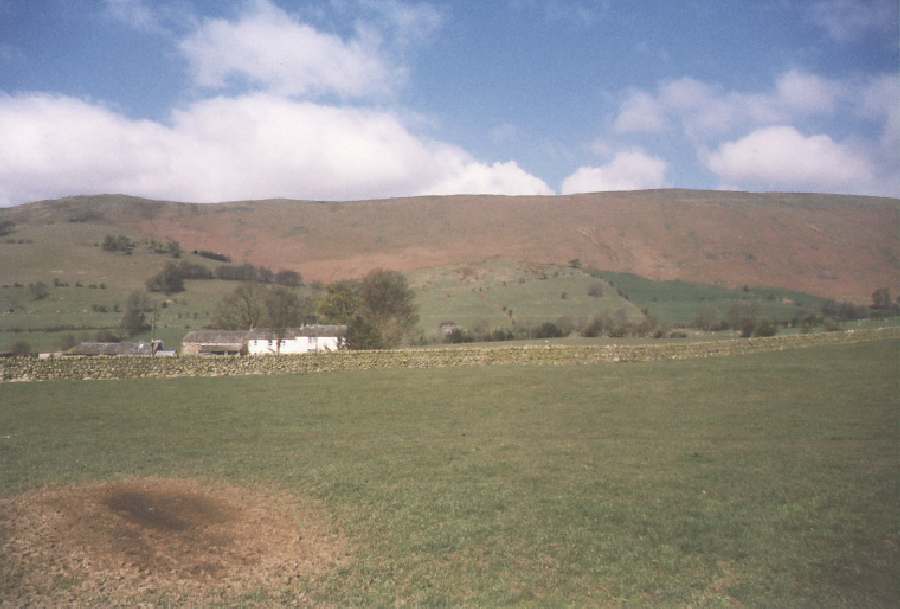 In 1743, on a fine summer's evening a singular meteorous
appearance was observed by two persons of credit and in perfect health, on Souterfell. It
resembled the figure of a man with a dog in pursuit of horses, running at an amazing pace,
till they got out of sight at the other end of the fell. On the following morning, the two
men ascended the mountain, in the full expectation of finding the man dead, and of picking
up some of the horses shoes which they thought must have been cast while galloping at such
a furious rate, but no traces of man or horse could be found; indeed the place is so
extremely steep that a horse could scarcely travel on it at all. In the following year, on
the 23rd of June, 1744, about seven o'clock in the evening, another strange atmospherical
phænomenon was exhibited. At this time troops of horsemen were seen riding on the side of
Souterfell, in pretty close ranks, and at a brisk pace. The equestrian figures became
visible at a place called Knott, and advanced in regular troops along the side of the
fell, till they came opposite Blake hills, when they passed over the mountain after
describing a kind of curvilineal path. They moved at a regular swift walk, and continued
to be seen for upwards of two hours, the approach of darkness alone preventing them from
being visible. Many troops were seen in succession, and frequently the last but one in a
troop quitted his position, galloped to the front, and took up the same pace with the
rest.
In 1743, on a fine summer's evening a singular meteorous
appearance was observed by two persons of credit and in perfect health, on Souterfell. It
resembled the figure of a man with a dog in pursuit of horses, running at an amazing pace,
till they got out of sight at the other end of the fell. On the following morning, the two
men ascended the mountain, in the full expectation of finding the man dead, and of picking
up some of the horses shoes which they thought must have been cast while galloping at such
a furious rate, but no traces of man or horse could be found; indeed the place is so
extremely steep that a horse could scarcely travel on it at all. In the following year, on
the 23rd of June, 1744, about seven o'clock in the evening, another strange atmospherical
phænomenon was exhibited. At this time troops of horsemen were seen riding on the side of
Souterfell, in pretty close ranks, and at a brisk pace. The equestrian figures became
visible at a place called Knott, and advanced in regular troops along the side of the
fell, till they came opposite Blake hills, when they passed over the mountain after
describing a kind of curvilineal path. They moved at a regular swift walk, and continued
to be seen for upwards of two hours, the approach of darkness alone preventing them from
being visible. Many troops were seen in succession, and frequently the last but one in a
troop quitted his position, galloped to the front, and took up the same pace with the
rest.The number of persons who saw these aerial troopers amounted to about twenty-six; and the attestation of these facts, signed by two of the party, bears date, 21st July, 1785. Similar phænomena were seen near Stockton-on-the-Forest, in Yorkshire, in 1792; in Harrogate, on June 28th, 1812; and near St. Neot's, in Huntingdonshire, in 1820. Aerial phænomena of a like nature are recorded by Livy, Josephus, and Suetonius; and a passage in Sacred History seems to refer to a similar circumstance. (See Judges ix. 36.) Philosophers pretend to account for these appearances on the principle of atmospherical refraction. Many, in this country, considered them as ominous of the great waste of blood spilt by Britain in her wars with America and France. Shakspeare says, in Julius Cæsar, "When these prodigies do so conjointly meet, let not man say they are natural; for I believe they are portentous things unto the climate that they point upon."
Mannix & Whellan, History, Gazetteer and Directory of Cumberland, 1847